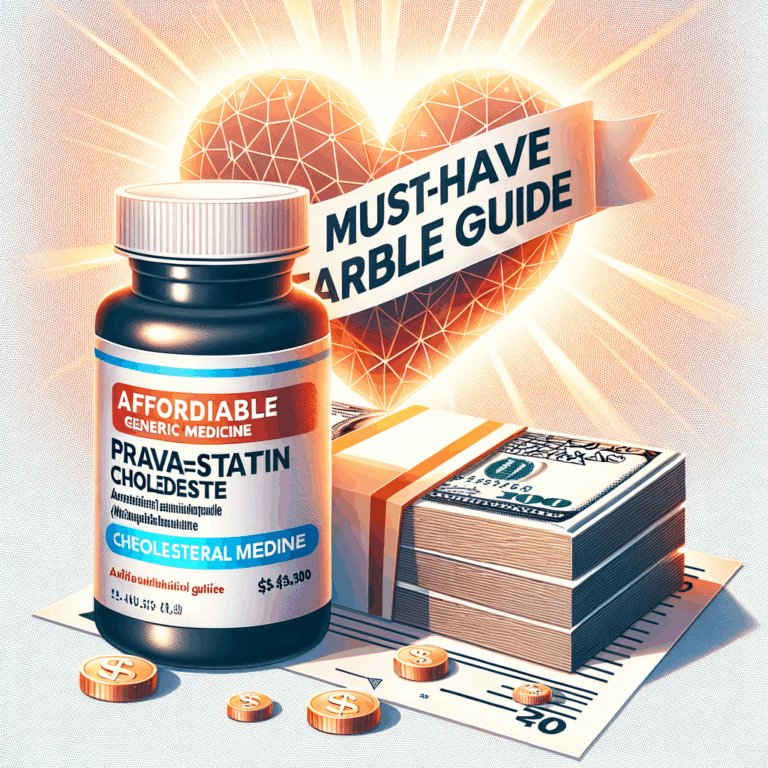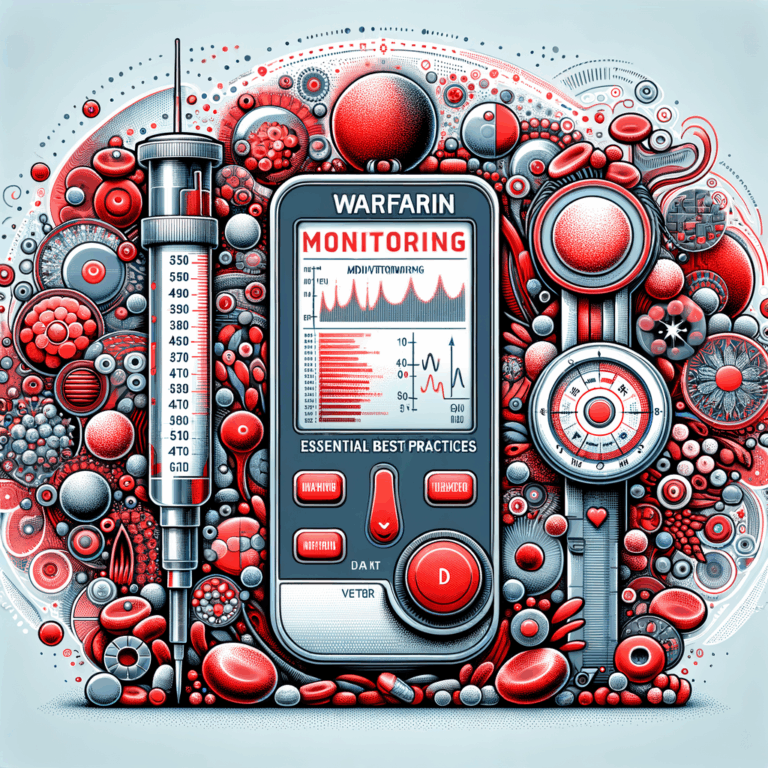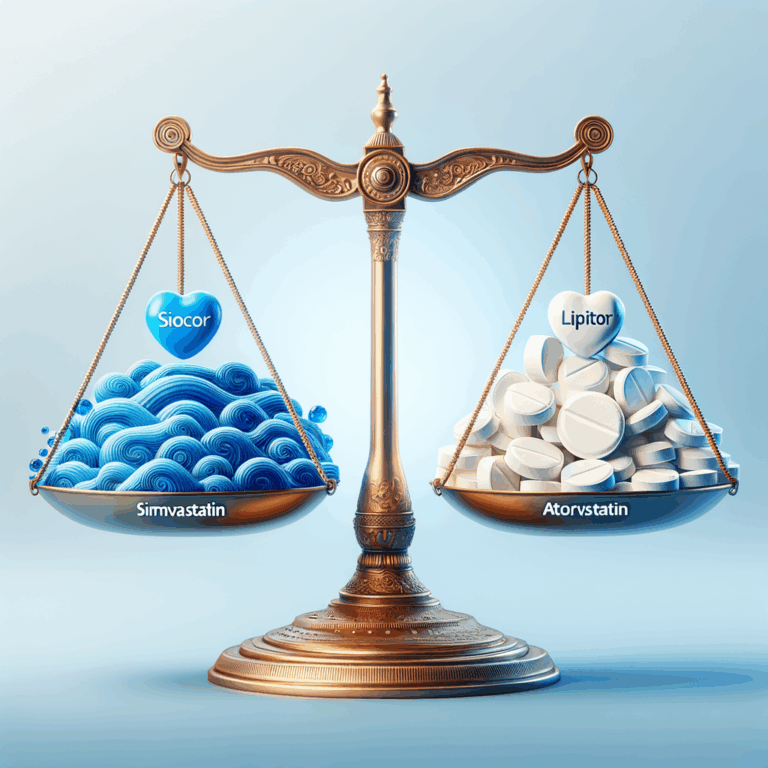
- Understanding Tramadol Pain Medication
- How Tramadol Works
- Mechanism of action
- Forms and dosing
- Common Uses and Benefits
- Conditions treated with tramadol
- Benefits compared to other pain relievers
- Safety Profile and Side Effects
- Common side effects
- Serious risks and warnings
- Interactions and Contraindications
- Drug interactions
- Who should avoid tramadol
- Cost and Affordability
- Generic availability and pricing
- Ways to save money
- How to Use Tramadol Safely
- Starting and monitoring therapy
- Storage and disposal
- Comparisons: Tramadol vs. Other Pain Medications
- Tramadol vs. NSAIDs and acetaminophen
- Tramadol vs. stronger opioids
- Managing Pain Beyond Medication
- Non-pharmacologic approaches
- Multimodal pain management
- Special Populations and Considerations
- Older adults
- Pregnancy and breastfeeding
- Legal and Regulatory Landscape
- Scheduling and prescription rules
- Trends in prescribing
- Practical Tips for Patients Taking Tramadol
- What to ask your prescriber
- Daily living tips
- Real-World Cases and Patient Stories
- Short-term post-op relief
- Chronic pain management
- Common Myths and Misconceptions
- When to Seek Immediate Help
- Warning signs of serious reactions
- Addressing suspected misuse or dependence
- Decision Guide: Is Tramadol Right for You?
- Factors to consider
- Questions to revisit regularly
- Summary and Key Takeaways
- Frequently Asked Questions (FAQs)
- References
Understanding Tramadol Pain Medication
Tramadol Pain Medication often appears in conversations about affordable pain relief. It belongs to a class of drugs called opioid analgesics, yet it works a little differently than classic opioids. Doctors prescribe it for moderate to moderately severe pain. At the same time, patients expect relief without extreme cost or overly sedating effects.
You should know how tramadol works, what it treats, and its risk profile. That information helps you weigh benefits against potential harms. Below, I walk through essential facts, practical tips, and safety measures you can use when considering tramadol as an option.
How Tramadol Works
Mechanism of action
Tramadol binds to opioid receptors in the brain and spinal cord. It also inhibits the reuptake of norepinephrine and serotonin. Thus, it reduces pain through two main pathways. This dual action often leads to effective relief with lower typical opioid side effects.
Because tramadol acts on neurotransmitters, it can influence mood and sensitivity to pain. For many patients, this helps when pain has both physical and emotional components. However, that same action raises interactions and risk concerns.
Forms and dosing
Tramadol comes in short-acting and extended-release tablets. Short-acting forms usually work within an hour and last about 4 to 6 hours. Extended-release tablets release the drug slowly and may last 24 hours. Doctors choose the form based on pain type and daily routine.
Typical starting doses remain low. Clinicians often recommend 25–50 mg every 4–6 hours for immediate-release tramadol. For extended-release, doses differ and require medical oversight. Never change your dose without consulting a healthcare professional.
Common Uses and Benefits
Conditions treated with tramadol
Tramadol treats many pain types. Clinicians prescribe it for post-operative pain and injuries. It also helps with chronic conditions like osteoarthritis and certain neuropathic pains. In some cases, doctors use it when non-opioid painkillers fail or cause side effects.
Moreover, tramadol often serves as a step-up therapy. People try simpler options first, like acetaminophen or NSAIDs. If those options do not provide enough relief, doctors may add or switch to tramadol.
Benefits compared to other pain relievers
Tramadol provides effective relief, and many patients tolerate it well. Compared to stronger opioids, it often shows lower rates of respiratory depression at common doses. Also, it can relieve nerve-related pain due to its effects on serotonin and norepinephrine.
Furthermore, tramadol often costs less than branded strong opioids. Generic forms remain affordable and widely available. Thus, for many households, tramadol suits both budget and medical need.
Safety Profile and Side Effects
Common side effects
Like any medication, tramadol causes side effects. Common complaints include dizziness, nausea, constipation, and drowsiness. Most effects occur early in therapy or after a dose increase. Usually, these symptoms reduce over time as the body adjusts.
You can manage some side effects with lifestyle changes. For instance, eat small meals for nausea. Increase fiber and fluids for constipation. Also, avoid driving until you understand how tramadol affects you.
Serious risks and warnings
Tramadol carries serious risks in some situations. It can cause seizures, especially in people with seizure disorders or those taking certain medications. Also, tramadol may lead to serotonin syndrome when mixed with other serotonergic drugs. This condition can turn life-threatening quickly.
Finally, tramadol can cause dependence and withdrawal after prolonged use. While the addiction risk may be lower than that of stronger opioids, it still exists. Physicians should monitor long-term patients and taper doses carefully when stopping.
Interactions and Contraindications
Drug interactions
Tramadol interacts with many drugs. Combining it with benzodiazepines, other opioids, or alcohol raises sedation and breathing risk. Mixing it with antidepressants such as SSRIs, SNRIs, or MAOIs increases the risk of serotonin syndrome.
Always tell your provider about all medications, supplements, and herbal products you take. Pharmacists can also check for interactions every time you fill a prescription.
Who should avoid tramadol
Some people should avoid tramadol entirely. Those with a history of severe respiratory problems, uncontrolled seizures, or allergy to tramadol must not take it. Also, pregnant or breastfeeding women require specialized guidance. Doctors often choose alternative pain management strategies in those cases.
Moreover, avoid tramadol if you take MAO inhibitors or if you recently used them. Your prescriber can recommend safe alternatives and timing.
Cost and Affordability
Generic availability and pricing
Generic tramadol tablets make this drug affordable for many people. Compared to brand-name opioids, tramadol usually costs less per dose. Pharmacies across the country typically carry it, which increases access.
Also, insurance plans often cover generic tramadol. That coverage lowers out-of-pocket costs further. Still, copays and formulary placements vary, so check with your insurer.
Ways to save money
You can reduce costs in several ways. First, ask your prescriber for a generic formulation. Second, buy through discount programs or use manufacturer coupons when available. Third, compare prices across local pharmacies or use online pharmacy price comparison tools.
Finally, talk to your pharmacist about pill splitting when appropriate. In some cases, larger-tablet dosing and splitting may reduce cost per dose. However, only split tablets designed for that use.
How to Use Tramadol Safely
Starting and monitoring therapy
Start with the lowest effective dose and adjust only under supervision. Regular follow-up visits help clinicians monitor efficacy and side effects. Also, your medical team can spot early signs of dependence or misuse.
Keep a medication diary for chronic pain. Record dose times, pain levels, and adverse effects. That log helps your clinician tailor therapy better.
Storage and disposal
Store tramadol away from children and pets, ideally in a locked container. Avoid leaving it in places with high humidity, like bathrooms. Dispose of unused tramadol according to FDA guidelines or pharmacy take-back programs.
If a take-back program is unavailable, mix medications with undesirable substances and place them in sealed containers before trashing. Also, remove all personal information from prescription bottles.
Comparisons: Tramadol vs. Other Pain Medications
Tramadol vs. NSAIDs and acetaminophen
NSAIDs and acetaminophen work well for many mild to moderate pains. They reduce inflammation or fever and often have fewer central nervous system effects. However, they sometimes cause stomach or liver problems.
In contrast, tramadol targets central pain pathways and may relieve pain when NSAIDs or acetaminophen fail. Therefore, clinicians might use tramadol as a second-line option after those agents.
Tramadol vs. stronger opioids
Stronger opioids like morphine and oxycodone produce more potent pain relief. They also carry higher risk of respiratory depression and dependence. Tramadol tends to have a lower overdose risk at typical doses. Still, misuse can lead to serious harm.
Consequently, prescribers may choose tramadol when they want a middle-ground option. They maintain caution and monitor use strictly, especially for long-term therapy.
Managing Pain Beyond Medication
Non-pharmacologic approaches
Combine tramadol with non-drug therapies for better outcomes. Physical therapy helps restore function and reduce pain. Heat, cold, and gentle exercise lower discomfort in many conditions.
Also, cognitive-behavioral therapy and mindfulness can change pain perception. These approaches often reduce reliance on medication. They serve as valuable long-term strategies.
Multimodal pain management
Multimodal pain management uses several methods together. For instance, a doctor may combine tramadol with topical NSAIDs, physical therapy, and lifestyle changes. This approach targets pain through multiple pathways.
Such plans can improve relief while minimizing drug doses. Consequently, they reduce the risk of side effects and dependence.
Special Populations and Considerations
Older adults
Older adults often have multiple health issues and medications. They may metabolize tramadol more slowly, which raises side effect risk. Clinicians generally start with lower doses and monitor closely.
Also, falls and confusion can increase with opioid use in seniors. For that reason, prescribers emphasize non-drug therapies and safer alternatives when possible.
Pregnancy and breastfeeding
Pregnancy and breastfeeding require special caution. Tramadol crosses the placenta and the breast milk. Doctors weigh the benefits and risks carefully. In many cases, they choose alternative pain plans during pregnancy.
If tramadol becomes necessary during pregnancy, clinicians follow strict monitoring and dosing strategies. For breastfeeding, they may suggest alternatives or special timing to minimize infant exposure.
Legal and Regulatory Landscape
Scheduling and prescription rules
Tramadol has different legal statuses worldwide. In the United States, it remains a controlled substance. State and federal laws shape prescription limits and monitoring. Many regions require prescription monitoring programs to track opioid prescriptions.
Pharmacies and prescribers must follow those rules. They also apply strategies to prevent diversion and misuse. Patients should expect background checks and verification when filling tramadol prescriptions.
Trends in prescribing
Prescribing trends shifted in response to the opioid crisis. Doctors now use opioids, including tramadol, more cautiously. Many clinicians emphasize non-opioid approaches and set clear treatment goals before initiating treatment.
Also, education campaigns promote safer prescribing, proper disposal, and addiction screening. Those efforts aim to protect patients without denying necessary relief.
Practical Tips for Patients Taking Tramadol
What to ask your prescriber
Before starting tramadol, ask key questions. For example:
– What dose should I start with?
– How long should I take tramadol?
– What side effects should I expect?
– What interactions should I avoid?
– How will we monitor for dependence?
These questions help you participate in your care. They also encourage a shared decision-making process.
Daily living tips
Take tramadol precisely as prescribed. Avoid alcohol and other sedatives while taking it. Keep travel and work activities in mind until you know how tramadol affects you.
Also, carry a list of your medications. That list helps emergency providers if a problem occurs. Finally, store and dispose of tramadol safely to protect others.
Real-World Cases and Patient Stories
Short-term post-op relief
Many patients report tramadol eased post-surgical pain effectively. They needed fewer strong opioids and experienced manageable side effects. In those cases, tramadol provided a bridge to full recovery without heavy sedation.
Patients often appreciated shorter recovery times and lower costs. They also reported fewer breathing concerns than with stronger opioids.
Chronic pain management
Some chronic pain patients find tramadol helps when NSAIDs fail. It improves function and quality of life for many. At the same time, clinicians monitor patients closely for tolerance and mood changes.
Importantly, patients who pair tramadol with therapy and lifestyle changes often see the best long-term outcomes.
Common Myths and Misconceptions
Reality: Tramadol can cause dependence and addiction. While many believe it is safer than other opioids, risks remain. Long-term use can produce withdrawal symptoms on stopping. Therefore, clinicians and patients must stay vigilant.
Reality: Tramadol can interact dangerously with many antidepressants. Combining it with SSRIs or MAOIs raises the risk of serotonin syndrome and seizures. Always consult a prescriber before combining treatments.
When to Seek Immediate Help
Warning signs of serious reactions
Seek emergency care if you experience shallow breathing, extreme drowsiness, or unresponsiveness. These signs suggest overdose. Also, seek help if you develop high fever, rapid heartbeat, confusion, or muscle rigidity. Those symptoms could indicate serotonin syndrome.
If you experience seizures, call emergency services right away. Lastly, if you suspect an allergic reaction—such as swelling, hives, or difficulty breathing—get urgent care.
Addressing suspected misuse or dependence
If you or a loved one shows signs of misuse, contact a healthcare provider immediately. Many clinics offer addiction services and counseling. You can also call national hotlines for guidance.
Early intervention improves outcomes. Treatment options include counseling, medication-assisted therapy, and peer support groups.
Decision Guide: Is Tramadol Right for You?
Factors to consider
Think about pain severity, previous medication responses, medical history, and current medications. Also, factor in cost, access to monitoring, and potential side effects. Discuss these points openly with your prescriber.
If you have a history of substance use disorder or seizures, your clinician may prefer alternatives. Alternatively, tramadol might work well for acute pain in someone without those risk factors.
Questions to revisit regularly
Reassess whether tramadol still helps after a few weeks of use. Ask whether it improves function, not just pain scores. If it does not, request a taper and try other options.
Also, regularly review side effects and medication interactions. Ongoing communication with your clinician keeps your treatment safe and effective.
Summary and Key Takeaways
Tramadol Pain Medication provides a viable, often affordable option for moderate pain. It works via opioid receptors and by altering neurotransmitter levels. This dual mechanism helps with both nociceptive and some neuropathic pain.
However, tramadol carries real risks, including seizures, serotonin syndrome, and dependence. Use it under medical supervision, follow dosing instructions, and watch for interactions. Combine tramadol with non-drug strategies to maximize outcomes and reduce long-term reliance.
If you consider tramadol, ask your prescriber the right questions. Also, store and dispose of the medication responsibly. With careful use, tramadol can become a helpful part of your pain-management toolkit.
Frequently Asked Questions (FAQs)
1. What is the difference between tramadol and other opioids?
– Tramadol acts on opioid receptors and modifies serotonin and norepinephrine. That dual action distinguishes it from many classical opioids. It often causes less respiratory depression at usual doses, but risks still exist.
2. Can I take tramadol with ibuprofen or acetaminophen?
– In many cases, doctors allow tramadol with these non-opioid pain relievers. Combining drugs can provide better relief with lower doses. However, always confirm with your prescriber or pharmacist before mixing medications.
3. How long can I safely take tramadol?
– Short-term use for acute pain is common. Long-term use requires careful medical oversight. Regular reassessment helps prevent dependence and side effects. Your clinician will set a timeline based on your condition.
4. Does tramadol show up on drug tests?
– Standard DOT and employment drug screens often do not detect tramadol. However, specialized tests can identify it. If you need testing, inform the testing authority about prescribed tramadol.
5. Can tramadol cause withdrawal symptoms?
– Yes. Stopping tramadol suddenly after prolonged use can cause withdrawal. Symptoms may include agitation, sweating, GI upset, and flu-like symptoms. A clinician can create a tapering plan to reduce risk.
6. Is tramadol addictive?
– Tramadol can be addictive, although addiction risk varies. Dependence, misuse, and addiction are possible. Monitor use and follow medical guidance to reduce this risk.
7. Can I drink alcohol while taking tramadol?
– No. Combining tramadol with alcohol increases sedation and breathing problems. Avoid alcohol while taking tramadol.
8. Can tramadol cause seizures?
– Yes. Tramadol lowers the seizure threshold, especially at high doses. People with seizure disorders or those on certain medications face greater risk. Discuss seizure history with your prescriber.
9. Are there natural alternatives to tramadol?
– Non-pharmacologic options include physical therapy, exercise, heat/cold, and cognitive therapies. Supplements sometimes help, but evidence varies. Discuss all alternatives with your provider.
10. Where can I find help for tramadol misuse?
– Contact your primary care doctor, a local addiction clinic, or national hotlines like SAMHSA (1-800-662-HELP in the U.S.). Many treatment programs offer counseling and medication-assisted therapy.
References
– U.S. Food & Drug Administration — Tramadol Information: https://www.fda.gov/drugs/postmarket-drug-safety-information-patients-and-providers/tramadol-information
– National Library of Medicine — Tramadol: https://medlineplus.gov/druginfo/meds/a695011.html
– Centers for Disease Control and Prevention — Opioid Guidance: https://www.cdc.gov/drugoverdose/index.html
– Mayo Clinic — Tramadol Oral Route: https://www.mayoclinic.org/drugs-supplements/tramadol-oral-route/description/drg-20068163
– National Institute on Drug Abuse — Opioids and Addiction: https://www.drugabuse.gov/drug-topics/opioids
Note: This post aims to inform and not replace professional medical advice. Always consult your healthcare provider before starting or changing medication.



